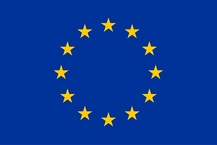Informationstechnik - Sicherheitsverfahren - Verschlüsselungsalgorithmen - Teil 2: Asymmetrische Chiffren Information technology - Security techniques - Encryption algorithms - Part 2: Asymmetric ciphers
Informationstechnik - Sicherheitsverfahren - Verschlüsselungsalgorithmen - Teil 2: Asymmetrische ChiffrenInformation technology - Security techniques - Encryption algorithms - Part 2: Asymmetric ciphers |
| Shortname | ISO/IEC 18033-2:2006-05 |
|---|---|
| Dokumentnummer | 18033-2 |
| Ausgabedatum | 2006-05-00 |
| Erwerb bei | https://www.vde-verlag.de/iec-normen/213871/iso-iec-18033-2-2006.html |
| Internationales Gremium | ISO/IEC JTC 1/SC 27 |
| Thema | Algorithmen , Sicherheitsverfahren , Verschlüsselung |
| Sektor | Informationstechnik und Telekommunikation |
| Branche | Informationstechnik |
| Level of Abstraction | 1 |
- Einführungsbeitrag (short) EN:
ISO/IEC 18033-2:2006 specifies encryption systems (ciphers) for the purpose of data confidentiality. The primary purpose of encryption (or encipherment) techniques is to protect the confidentiality of stored or transmitted data. An encryption algorithm is applied to data (often called plaintext or cleartext) to yield encrypted data (or ciphertext); this process is known as encryption. The encryption algorithm should be designed so that the ciphertext yields no information about the plaintext except, perhaps, its length. Associated with every encryption algorithm is a corresponding decryption algorithm, which transforms ciphertext back into its original plaintext. An asymmetric, i.e. public-key, encryption scheme allows a sender to use a recipient's public key to transmit an encryption of a message to the receiver, who can use his secret key to decrypt the given ciphertext, thereby obtaining the original message. Such a scheme should be secure in the sense that no information about the message should be leaked to a (resource-bounded) attacker, even if that attacker mounts a so-called 'chosen ciphertext' attack, in which he may obtain decryptions of other ciphertexts. This is the strongest type of attack that has been proposed for a public-key encryption scheme. ISO/IEC 18033-2:2006 specifies the functional interface of such a scheme, and in addition specifies a number of particular schemes that appear to be secure against chosen ciphertext attack. The different schemes offer different trade-offs between security properties and efficiency.
- Anmerkung:
Geändert durch ISO/IEC 18033-2 AMD 1 (2017-11)
- ISO/IEC 10118-2 (2000-12)
- ISO/IEC 10118-3 (2004-03)
- ISO/IEC 18033-3 (2005-07)
- ISO/IEC 9797-1 (1999-12)
- ISO/IEC 9797-2 (2002-06)
-

Transnational Branche: Informationstechnik
Ergebnis 61Vorschlag für eine RICHTLINIE DES EUROPÄISCHEN PARLAMENTS UND DES RATES zur Anpassung der Vorschriften über außervertragliche zivilrechtliche Haftung an künstliche Intelligenz (Richtlinie über KI-Haftung)KI-Haftungs-Richtlinie
Einzelne Vorschriften
.

Transnational Branche: Informationstechnik
Ergebnis 62Vorschlag für eine VERORDNUNG DES EUROPÄISCHEN PARLAMENTS UND DES RATES über MaschinenprodukteMaschinen-VO-E
Einzelne Vorschriften
Alle

Transnational Branche: Informationstechnik
Ergebnis 63Verordnung (EU) 2022/858 des Europäischen Parlaments und des Rates vom 30. Mai 2022 über eine Pilotregelung für auf Distributed-Ledger-Technologie basierende Marktinfrastrukturen und zur Änderung der Verordnungen (EU) Nr. 600/2014 und (EU) Nr. 909/2014 sowie der Richtlinie 2014/65/EUDLT-VO
Einzelne Vorschriften
Art. 7 IV, V; 8 IV lit. c; 9 IV lit. c; 10 IV lit. c; 11 I lit. b

Bundesrecht Branche: Informationstechnik
Ergebnis 64Gesetz über den Datenschutz und den Schutz der Privatsphäre in der Telekommunikation und bei Telemedien (Telekommunikation-Telemedien-Datenschutz-Gesetz - TTDSG)TTDSG
Einzelne Vorschriften
§§ 19; 22; 23

Transnational Branche: Informationstechnik
Ergebnis 65RICHTLINIE 2009/140/EG DES EUROPÄISCHEN PARLAMENTS UND DES RATES vom 25. November 2009 zur Änderung der Richtlinie 2002/21/EG über einen gemeinsamen Rechtsrahmen für elektronische Kommunikationsnetze und -dienste, der Richtlinie 2002/19/EG über den Zugang zu elektronischen Kommunikationsnetzen und zugehörigen Einrichtungen sowie deren Zusammenschaltung und der Richtlinie 2002/20/EG über die Genehmigung elektronischer Kommunikationsnetze und -diensteRL 2009/140/EG
Einzelne Vorschriften
Art. 13a
